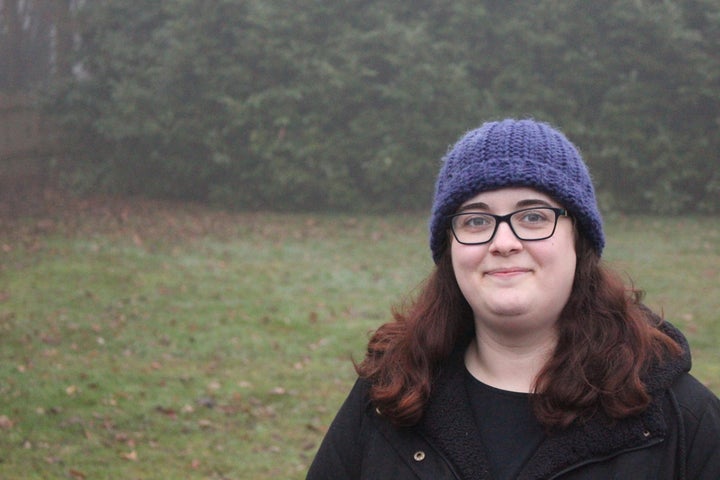“Honestly, I wouldn’t function without pain medication,” says Jennifer Brough, 30, who lives with fibromyalgia and endometriosis, two conditions that have “radically” altered her life since she was diagnosed.
Brough is concerned about new draft guidance from the National Institute for Health and Care Excellence (NICE) that suggests painkillers – paracetamol, ibuprofen, aspirin and opioids – should not be prescribed to treat chronic primary pain (CPP), citing evidence they can cause harm, including addiction.
“While I am reticent to take painkillers often, when I have incapacitating flare-ups, medication provides the necessary respite I need to function,” she says.
Chronic primary pain refers to chronic pain as a disease in itself, according to NICE. It includes issues such as chronic musculoskeletal pain, as well as chronic pelvic pain and fibromyalgia. In contrast, chronic secondary pain is where the pain is a symptom of an underlying condition.
The draft guidance suggests there’s “little or no evidence” the commonly used drugs for chronic primary pain make any difference to people’s quality of life, pain or psychological distress. But Brough disagrees. “To suggest painkillers aren’t effective solutions for managing pain is an oversimplification of the issue,” says the editor and writer from Croydon.
While the guidelines indicate some concern around the long-term impacts of taking pain medication, such as addiction, Brough believes removing this as a treatment option “will dramatically affect the physical and psychological wellbeing of vast numbers of the population”.

Katy Stevens, 32 and from Essex, lives with the chronic primary pain condition fibromyalgia, in addition to psoriatic arthritis. “I’m generally a positive and motivated person, and enjoy working from home,” she says, “but when I have a chronic pain flare, I struggle with basic parenting and house-related work.”
Stevens, who is a content creator at Katy Kicker, is prescribed non-steroidal anti-inflammatory drug Naproxen for her pain, which she’s found helpful, in addition to heated blankets, cooling pads and regular exercise.
She’s also concerned by the draft guidance. “I’m worried my GP may not prescribe me pain medication going forward,” she says. “I manage really well for the majority of my chronic pain days, however, a couple of times a month I have to use Naproxen in particular, and it’s the only medication I’ve found to be helpful.
“I’ve tried herbal alternatives, and a variety of non-prescription products and returned back to Naproxen each time.”

The NICE draft guidance suggests gabapentinoids, local anaesthetics, ketamine, corticosteroids and antipsychotics shouldn’t be offered to people to manage chronic primary pain because, again, there’s “little or no evidence” these treatments work. Instead, people should be offered supervised group exercise programmes, some types of psychological therapy, or acupuncture, it said. Antidepressants can be considered, too.
Stevens says she’s found exercise helpful, and has learned mental health coping techniques for her worst pain days. She agrees anti-depressants can be useful, too – “I’ve previously been prescribed amitriptyline to help with my fibromyalgia symptoms, and found it worked well” – but believes pain medication also has its place within all of these options.
Medical professionals should be trusted to “exercise common sense” when it comes to treating people’s pain, she adds. “I personally receive a prescription for pain medication just 1-2 times a year, so my GP can see I’m only using it when I really need to. I want my own GP to know that I’m trying to help my body, but life with chronic pain is hard.”
In addition to pain relief, Brough has paid for private therapy and also takes pregabalin – a drug that primarily treats epilepsy and anxiety, but is also prescribed for nerve pain. She has found both beneficial, “but it is only another tool in the kit that sits alongside painkillers,” she says.
There’s a worry among people living with chronic pain that if you shift the focus to a psychological approach, there’s an underlying narrative it’s all in a person’s head. “To move to these alternative therapies – particularly in the psychological arena – emphasises that pain can disappear if we work on ourselves,” says Brough. “It smacks of a ‘mind over matter’ approach that simply isn’t a realistic choice for many people in chronic pain.”
Many people who live with chronic pain want more treatment options and research on the table, rather than taking options that some have found to be beneficial away.
Rachel Tait, 31, from Northumberland, who runs What A Pain – a website about life with chronic illness – worries the draft guidance will bring “a great deal of stress and worry” to those living with chronic primary pain, many of whom she speaks to on a daily basis.
Tait has rheumatoid arthritis (RA), characterised by chronic pain, inflammation and fatigue, and trigeminal neuralgia, a painful condition affecting the nerves in her face. While the draft guidance wouldn’t impact her, as she has chronic secondary pain, she’s concerned about the impact it could have on others.
“From my own experience I know pain medication alone isn’t a fix all, but it is a very important tool when used correctly for managing chronic pain,” she says. “It is needed in combination with other pain management though, and most importantly, the underlying cause of pain must be addressed.”
“Pain medication alone isn’t a fix all, but it is a very important tool.”
- Rachel Tait, 31, from Northumberland, who runs the What A Pain website
In a blog post on the draft guidance, retired physician and researcher Edzard Ernst questioned the evidence surrounding acupuncture in particular, as well as the very definition of chronic primary pain. “Pain is usually a symptom and not a disease,” said Ernst. “In many forms of what we now call CPP, an underlying disease does exist but might not yet be identifiable, I suspect.”
The NICE guidelines are open to public consultation until September 14 – and Brough is encouraging people with chronic primary pain to share their stories with the health body.
Paul Chrisp, director of the centre for guidelines at NICE, said the guidance acknowledges the need for further research across the range of possible treatment options, reflecting both the lack of evidence in this area and the need to provide further choice for people with the condition.
Commenting on the draft guidance, Nick Kosky, a consultant psychiatrist at Dorset HealthCare NHS University Foundation Trust and chair of the guideline committee, said patients with chronic pain expect a clear diagnosis and effective treatment, “but its complexity and the fact GPs and specialists find chronic pain challenging to manage, means this is often not possible,” he adds.
“This mismatch between patient expectations and treatment outcomes can affect the relationship between healthcare professionals and patients, a possible consequence of which is the prescribing of ineffective but harmful drugs.
“This guideline, by fostering a clearer understanding of the evidence for the effectiveness of chronic pain treatments, will help to improve the confidence of healthcare professionals in their conversations with patients. In doing so it will help them better manage both their own and their patient’s expectations.”
But Tait says it’s “unfair” to release these guidelines without reassuring the people who live with chronic pain that they’ll still have access to the treatments they need. “Removing pain relief, and not replacing it with something else effective, leaves people vulnerable,” she adds.